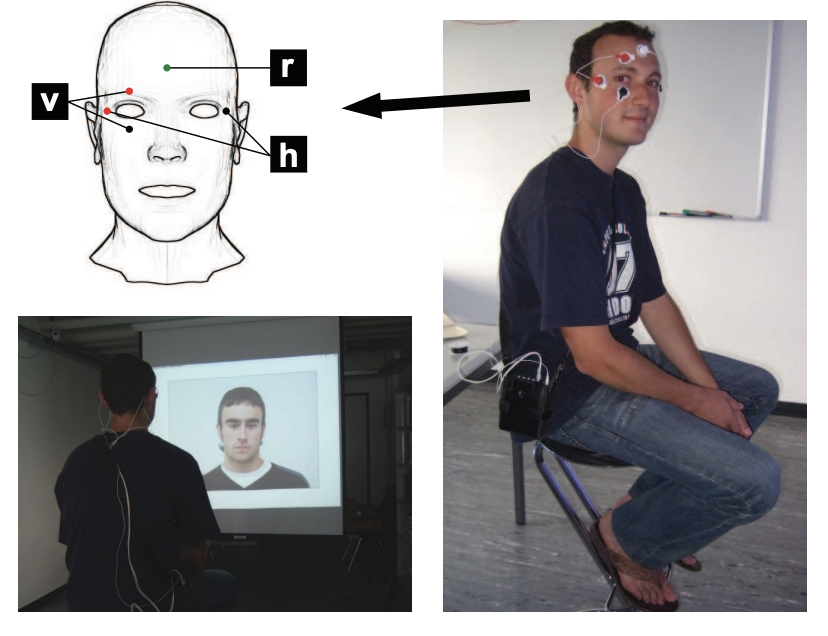Recognition of Visual Memory Recall Processes Using Eye Movement Analysis
Andreas Bulling, Daniel Roggen
Proc. ACM International Joint Conference on Pervasive and Ubiquitous Computing (UbiComp), pp. 455-464, 2011.

Abstract
Physical activity, location, as well as a person’s psychophysiological and affective state are common dimensions for developing context-aware systems in ubiquitous computing. An important yet missing contextual dimension is the cognitive context that comprises all aspects related to mental information processing, such as perception, memory, knowledge, or learning. In this work we investigate the feasibility of recognising visual memory recall. We use a recognition methodology that combines minimum redundancy maximum relevance feature selection (mRMR) with a support vector machine (SVM) classifier. We validate the methodology in a dual user study with a total of fourteen participants looking at familiar and unfamiliar pictures from four picture categories: abstract, landscapes, faces, and buildings. Using person-independent training, we are able to discriminate between familiar and unfamiliar abstract pictures with a top recognition rate of 84.3% (89.3% recall, 21.0% false positive rate) over all participants. We show that eye movement analysis is a promising approach to infer the cognitive context of a person and discuss the key challenges for the real-world implementation of eye-based cognition-aware systems.Links
Paper: bulling11_ubicomp.pdf
BibTeX
@inproceedings{bulling11_ubicomp,
author = {Bulling, Andreas and Roggen, Daniel},
keywords = {Cognition- Awareness, Cognitive Context, Electrooculography (EOG), Eye Movement Analysis, Visual Memory Recall},
title = {Recognition of Visual Memory Recall Processes Using Eye Movement Analysis},
booktitle = {Proc. ACM International Joint Conference on Pervasive and Ubiquitous Computing (UbiComp)},
year = {2011},
pages = {455-464},
doi = {10.1145/2030112.2030172}
}

